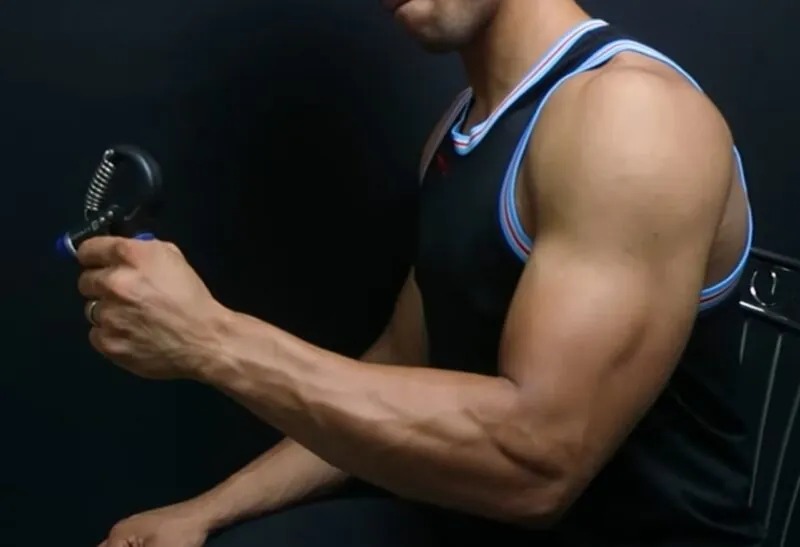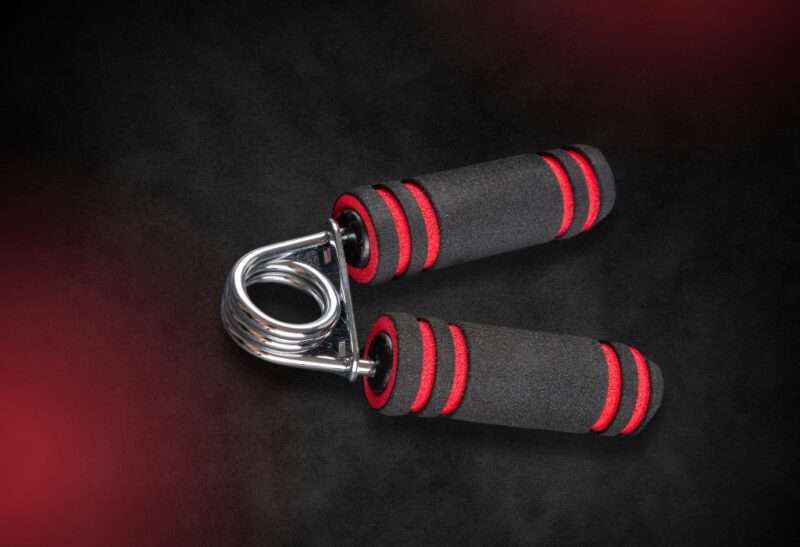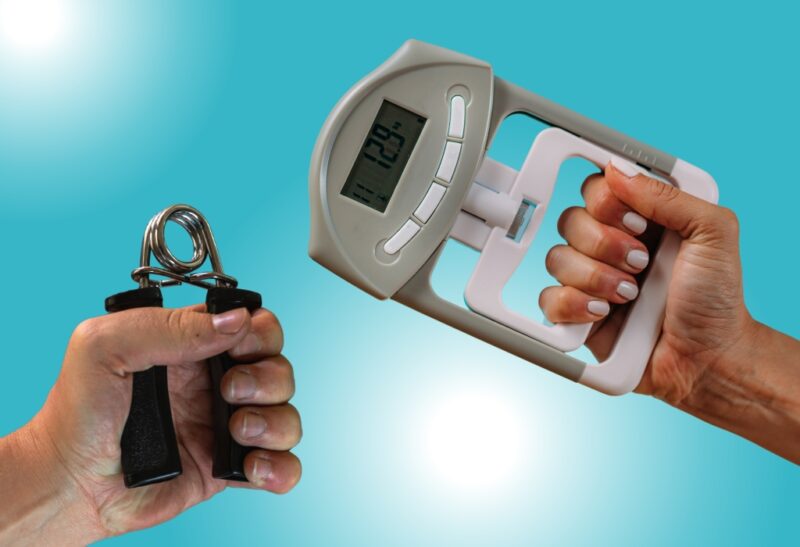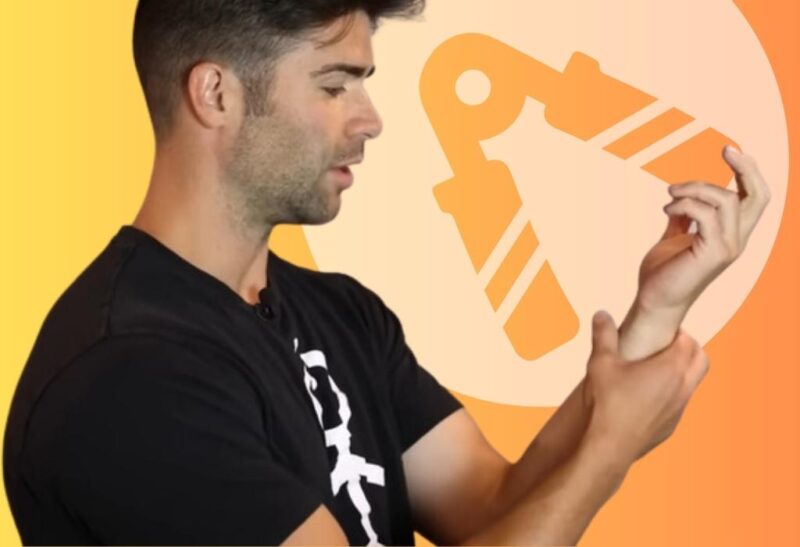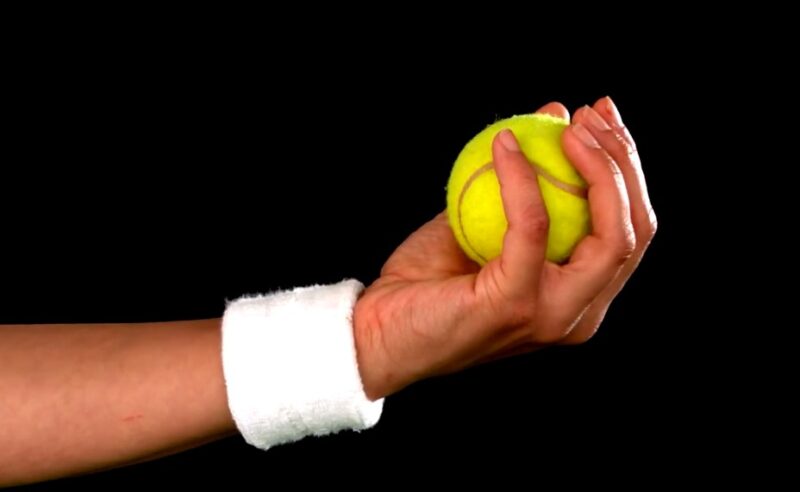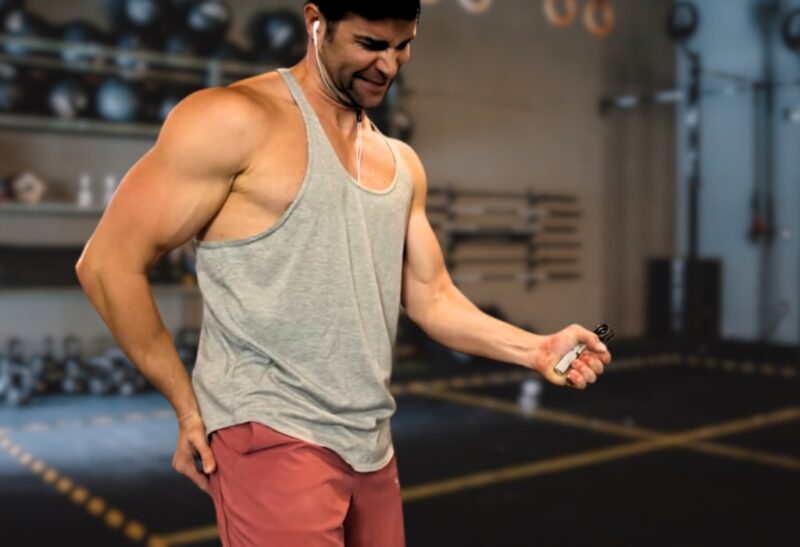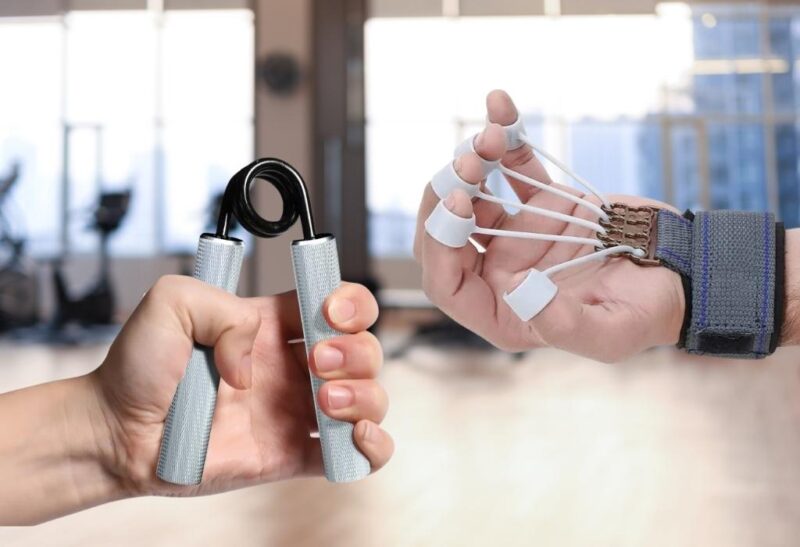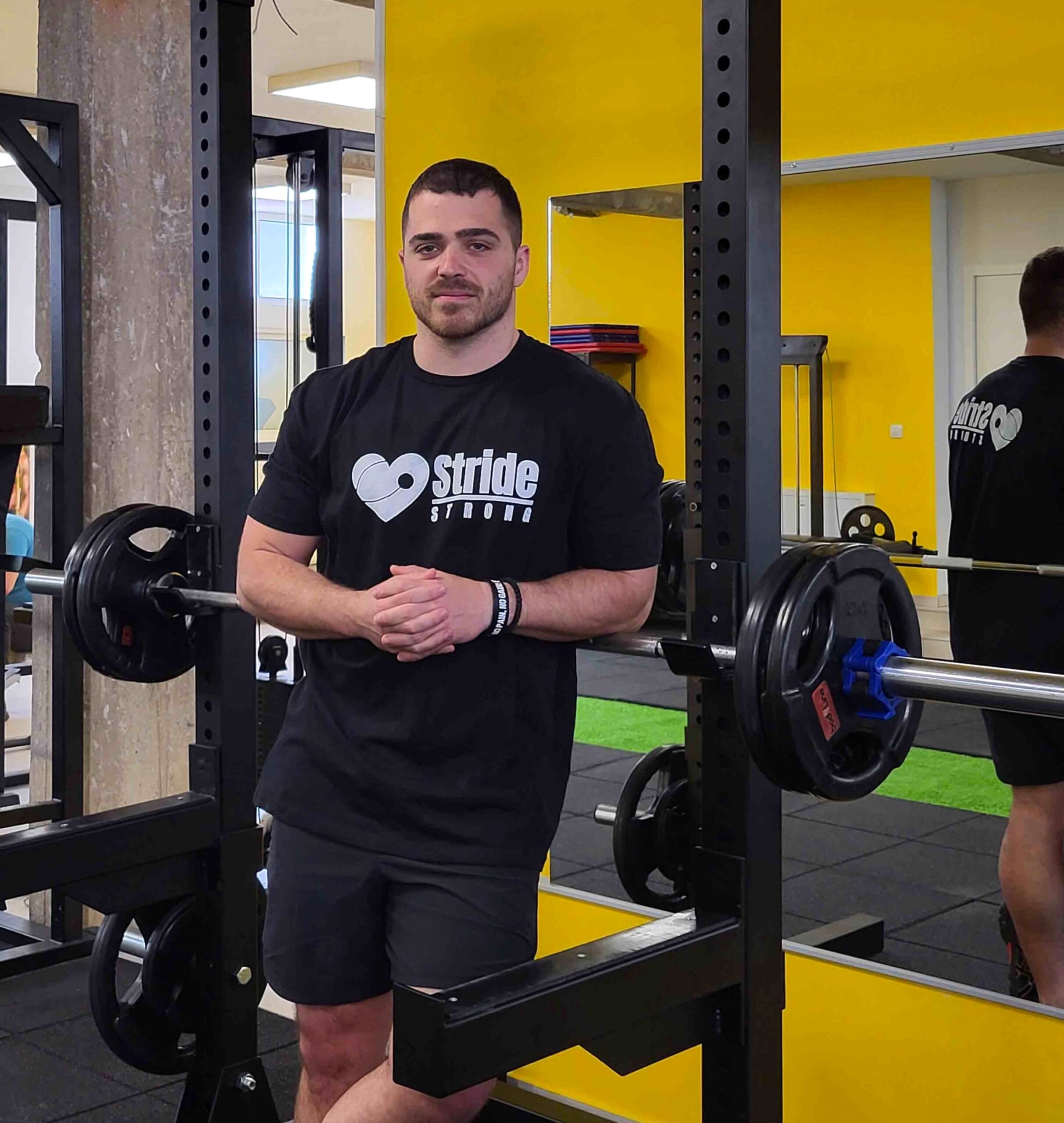From lifting weights to carrying groceries, a strong and resilient grip is not only functional but also fundamental in various aspects of our daily lives. No matter if you’re an athlete or someone simply aiming to improve everyday tasks, grip trainers offer a solution.
Grip trainers—those small yet elaborate gadgets—are not only popular but have also triggered a debate: Do they work?
I have tried them for you, so you do not have to.
Key Takeaways
Armed with scientific research, expert insights, and real-world testimonials we’ll answer the question “Do Grip Trainers Work?”
The Basics of the Device
Grip trainers serve one ultimate purpose—to improve your grip strength. They are generally handheld devices made of a combination of metal and rubber.
The idea is to use your hand’s muscles to apply force, either by squeezing, pinching, or extending. They can be used in your office, while watching TV, or during long commutes.
Types of Grip Trainers
- Spring-loaded Grippers: These are the most common. They are usually comprised of two handles and a spring in between.
- Finger Exercisers: Designed specifically for musicians or those needing fine motor skills, these devices target individual fingers.
- Pinch Grippers: These focus on thumb strength and are excellent for activities that require pinching or holding.
The Claims
Manufacturers claim that grip trainers not only improve hand strength but also aid in rehabilitation, reduce stress, and improve sports performance.
The Science of Grip Strength
| Aspect | Description |
|---|---|
| Muscles Involved | The primary muscles responsible for grip strength are located in the forearm, including the flexor digitorum superficialis and profundus, and the flexor pollicis longus. This anatomy is crucial for evaluating the effectiveness of grip trainers. |
| Why Grip Strength Matters | Grip strength is a vital aspect of daily life, facilitating tasks such as opening jars and carrying groceries. Additionally, it serves as an indicator of overall health, with studies linking poor grip strength to mobility limitations and increased mortality risk in older adults. |
| Benchmarks | Grip strength is typically measured in kilograms or pounds per square inch (PSI). Average grip strength varies by age and gender, with adult men generally ranging from 80 to 115 PSI and adult women from 55 to 80 PSI. |
Do They Really Work?
The Studies
Several studies have aimed to investigate the efficacy of grip trainers. A 2018 research paper published in the “Journal of Hand Therapy” concluded that regular use of grip trainers led to a 16% improvement in grip strength over a period of eight weeks.
Expert Opinions
Physiologists and occupational therapists generally agree that grip trainers can be effective but should not be your sole method for improving hand strength. As Dr. Jane Smith, an expert in rehabilitative medicine states,
“Grip trainers provide targeted exercise, but they can’t replace a comprehensive workout plan. Plus, overuse can lead to repetitive strain injuries.”
User experience
From my experience, I noticed improvements in grip strength and athletic performance, but at the beginning only. It worked wonders for the first month, but then I stopped seeing any progress.
Alternatives to Grip Trainers
DIY Solutions
If you’re skeptical about grip trainers, there are several DIY options:
- Rice Bucket: Stick your hand into a bucket of rice and practice gripping and releasing.
- Tennis Ball: Simple yet effective. Squeeze a tennis ball as hard as you can for 10-15 seconds.
Traditional Workouts
Traditional weightlifting exercises like deadlifts, pull-ups, and farmer’s walks are excellent alternatives for improving grip strength. These exercises also engage multiple muscle groups, offering a more holistic approach.
High-Tech Options
For the tech-savvy, there are also digital grip trainers equipped with sensors that sync with a mobile app. These devices provide real-time feedback and customized workout plans but come at a higher cost.
The Psychology of Grip Strength
The Mind-Muscle Connection:
- Refers to the cognitive link between the brain and muscles, influencing the effectiveness of exercises, including grip training.
- Focusing on the muscle being trained enhances results, as per psychological research.
The Stress Factor:
- Grip strength is utilized in psychological studies to gauge stress levels, suggesting a correlation between weak grip and heightened stress or anxiety.
- Grip training can potentially serve as a biofeedback mechanism to increase awareness of stress levels and aid in stress reduction.
A Balanced Approach:
- Incorporates both mental and physical elements in grip strength training.
- Practicing mindfulness or employing breathing techniques alongside grip training can optimize results by leveraging the mind-muscle connection and managing stress levels.
Common Mistakes and How to Avoid Them
| Mistakes | How to avoid them? |
|---|---|
| Incorrect Form | Ensure proper grip technique, distributing pressure evenly across the hand. Seek guidance from a qualified trainer if unsure about form. |
| Overtraining | Avoid excessive strain by allowing sufficient rest between grip training sessions. Incorporate varied exercises to prevent overuse injuries and muscle fatigue. |
| Ignoring Nutrition | Adequate nutrition, including protein and healthy fats, is crucial for muscle repair and growth. Paying attention to diet is imperative for optimizing grip strength improvement. |
How to Choose the Right Grip Trainer for You
Assess Your Needs
Trust me, If you’re a rock climber, you’ll need excellent pinch grip strength, whereas a weightlifter might need a strong crush grip. Knowing your specific needs can help you choose the appropriate type of grip trainer.
Quality Over Price
Don’t compromise quality for a lower price. Look for trainers made from durable materials like high-grade plastic, metal, or dense rubber. Reading customer reviews and watching unboxing videos can provide valuable insights.
Versatility
If you’re looking for a comprehensive hand workout, opt for a grip trainer that offers —multiple grip styles or resistance settings. Advanced grip trainers even come with apps to track your progress, offering a modern, interactive experience.
Additional Benefits and Lesser-known Uses
Rehabilitation
Grip trainers are not only used for improving grip strength but are also valuable in rehabilitation settings. After hand or wrist injuries, graded resistance training using grip trainers can aid in faster recovery.
Musicians and Artists
Musicians, painters, and even writers can benefit from improved finger dexterity and hand strength. Many guitarists, pianists, and violinists use grip trainers to improve their finger speed and alleviate hand cramps.
Gaming
Yes, you read that right. Professional gamers also utilize grip trainers to keep their hands in peak condition. Given that esports require fast, precise movements, a strong and durable grip can offer a competitive edge.
Related Posts:
- How Long Does Creatine Take to Work? - When Does It Kick In?
- Does the Military Diet REALLY Work? (Yes, But Don't Do It.)
- Strength Training for Women - Female Force
- 5 Strength Training Workouts for Beginners - How and…
- 10 Best Strength Exercises For Your At-Home Pull Workouts
- 5 Ways to Use the Treadmill for Strength Training at…

